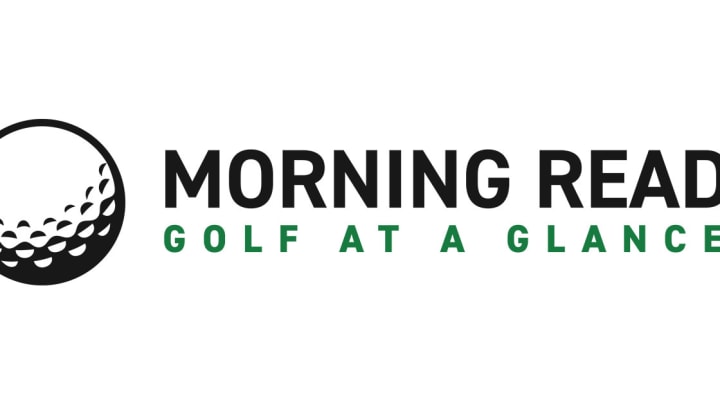Amateurs go OT in golf’s ‘ultramarathon’

Sure, the U.S. Amateur is the national championship. Every amateur wants to win it. The title comes with massive prestige and opens doors to other tournaments.
But if you ask the players, many say that the relentless format and quality field of the Western Amateur make it the world’s finest non-professional golf tournament.
“Winning the U.S. Amateur is winning the U.S. Amateur: winning the national championship,” said Scott Verplank, who won the 1984 U.S. Amateur and the 1985 Western Amateur. “But the Western Amateur was the tournament. Not only was it a marathon; it was a great test of golf, and the guy who was playing the best generally won.”
Verplank parlayed an exemption from his Western Amateur victory into his first of five PGA Tour titles, winning the 1985 Western Open while still an amateur.
Verplank recently appeared at a news conference previewing this year’s Western Amateur, which begins Tuesday and runs through Saturday at Sunset Ridge Country Club in Northfield, Ill., in Chicago’s northern suburbs.
The “ultramarathon” format of the Western is unlike anything in amateur or professional golf. The five-day combination of stroke play and match play can amount to 144 or so holes for the two finalists – or the equivalent of two PGA Tour events in a compressed time span. Winners Justin Leonard (1992) and David Chung (2010) hold the record for most match-play holes, with 76, meaning they logged 148 holes in medal and match play combined. Finalists at the U.S. Amateur also can go 144 or so holes, but it’s over a seven-day period – leaving time for sleep.
“It was an endurance test,” said Curtis Strange, a two-time U.S. Open winner and Fox TV golf analyst who won the Western Amateur medal- and match-play titles in 1974 at Point O’ Woods in Benton Harbor, Mich., the host in 1971-2008. “And it was a great field and a great course.” Strange needed 20 holes to defeat his Wake Forest roommate, Jay Haas, in the final match.
“It really felt like I was in a big-time tournament,” said two-time Masters champion Ben Crenshaw, who was a Western Amateur semifinalist in 1971, the medalist in 1972, and the medalist/match-play champion in 1973. “We just loved playing against the best in the country. We loved the golf course. And we wanted to put our name on that great big [George R. Thorne] trophy.” Crenshaw, 66, still remembers that Andy North knocked him out in match play in ’71 and Gil Morgan beat him in ’72.
The Western format goes like this: 18 holes Tuesday, 18 holes Wednesday with a cut to the low 44 and ties. Then 36 holes of stroke play Thursday, the crowning of the 72-hole medalist, and a cut to the low 16, who start match play the next day.
On Friday, two 18-hole matches cut the field to four semifinalists, who play 18-hole morning matches on Saturday before the finalists play the 18-hole final on Saturday afternoon.
No wonder these dudes work out.
The seven-day U.S. Amateur deal is almost vacation golf by comparison.
Last year, Norman Xiong, the college player of the year out of Oregon, took 22 holes to defeat Doc Redman, who would go on to win the U.S. Amateur two weeks later. It was the longest final match in championship history.
The current five-day format went into effect in 1961, when Jack Nicklaus won at New Orleans Country Club in his only Western appearance.
These days, the Western’s field is deeper and better than ever. It’s an invitational. Players are aggressively recruited based on their position in the Scratch Players World Amateur Ranking. There are no qualifiers diluting the field.
The top U.S. college programs are well-represented, and the best amateurs from Africa, Asia, Australia, Europe, North America and South America perennially compete (tee times).
“I think the Western Am is the strongest field in amateur golf,” said Patrick Flavin of Highland Park, Ill., an eight-time winner at Miami of Ohio and four-time Western participant. “It’s the best college players. It’s pretty much the best [amateur] players from all around the world.”
In recent years, the prestige of the U.S. Amateur and NCAA Championship have been enhanced by significant TV exposure that the Western has lacked.
Fox carries the U.S. Amateur as part of its USGA contract. Golf Channel can market the NCAA Championship to advertisers interested in selling their wares to college sports fans.
This year, the Western will be getting into the video act. Golf Channel will provide 12 hours of live match-play coverage on its digital platforms: GolfChannel.com, the network’s mobile app and thewesternamateur.com.
The video exposure should give golf fans a glimpse of the Western’s appeal minus the brand halo of a TV network. Golfers of this generation have spent their lives ignoring the networks, as they consume video on YouTube. So, it’s a first step.
And for viewers, watching the tournament online will be much more relaxing than actually playing in the most grueling event in golf.
Barry Cronin, a former golf writer with the Chicago Sun-Times, is media director for the John Deere Classic and head of Cronin Communications. He lives in Park Ridge, Ill. Email: bcronin@cronincommunications.com
